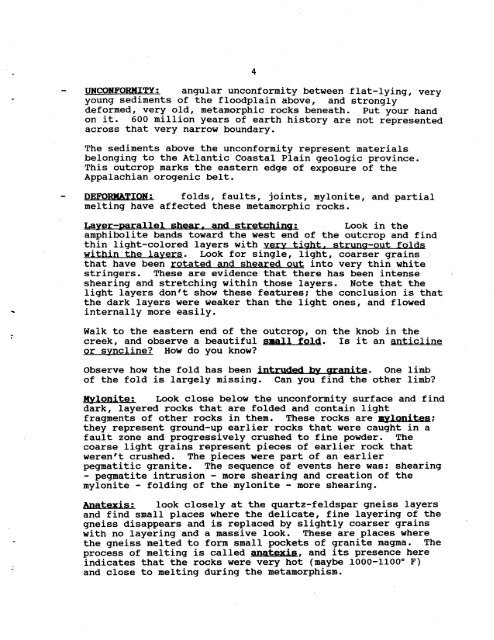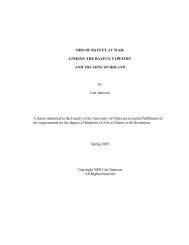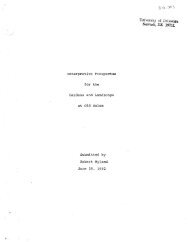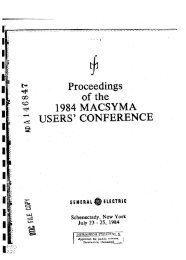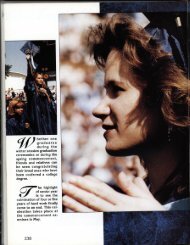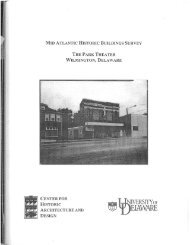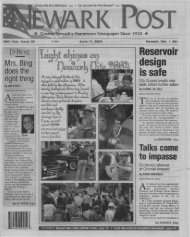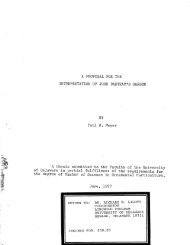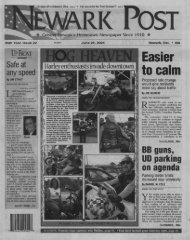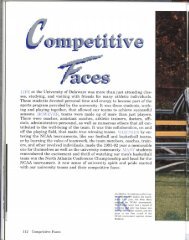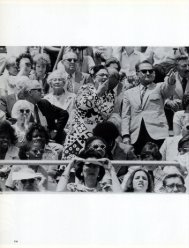FTELD TRIP ACROSS THE APPALACHTAN OROGENIC BELT
FTELD TRIP ACROSS THE APPALACHTAN OROGENIC BELT
FTELD TRIP ACROSS THE APPALACHTAN OROGENIC BELT
You also want an ePaper? Increase the reach of your titles
YUMPU automatically turns print PDFs into web optimized ePapers that Google loves.
4<br />
II{C€I{FOR}IITY: angular unconformity between flat-lying, very<br />
young sediments of the floodplain above, and strongly<br />
deforned, very old, metamorphic rocks beneath. put your hand<br />
on it. 600 nilrion years of earth history are not represented<br />
across that very narrolr boundary.<br />
The sediments above the unconformity represent naterials<br />
belonging to the Atlantic Coastal Plain geologic province.<br />
This outcrop marks the eastern edge of exposure of the<br />
Appalachian orogenic belt.<br />
DEFORI.IATIOT{: folds, faults, ioints, nylonite, and partiat<br />
melting have affected these metanorphic rocks.<br />
Layer-parallel shear, and stretching: Look in the<br />
arnphibolite bands toward the west end of the outcrop and find<br />
thin Iight-colored layers with<br />
within the layers. Look for single, light, coarser grains<br />
that have been rotated and sheared out into very thin white<br />
stringers. These are evidence that there has been intense<br />
shearing and stretching within those layers. Note that the<br />
light layers don't show these featuresi the conclusion is that<br />
the dark layers were weaker than the light ones, and flowed<br />
internally more easily.<br />
Walk to the eastern end of the outcrop, on the knob in the<br />
creek, and observe a beautiful snall fo1d. fs it an anticline<br />
or syncline? How do you know?<br />
observe how the fold has been intnrded by grraFite, One limb<br />
of the fold is largely rnissing. Can you find the other linb?<br />
l{ylonite: Look close below the unconfornity surface and find<br />
dark, Iayered rocks that are folded and contain light<br />
fragrments of other rocks in them. These rocks are nylqnites;<br />
they represent ground-up earlier rocks that were caught in a<br />
fault zone and progressively crushed to fine powder. The<br />
coarse light grains represent pieces of earlier rock that<br />
weren't crushed. The pieces were part of an earlier<br />
pegnatitic granite. The sequence of events here was: shearing<br />
- pegnatite intrusion - more shearing and creation of the<br />
mylonite - folding of the mylonite - more shearing.<br />
Anatexis: look closely at the quartz-feldspar gneiss layers<br />
and find snall places where the delicate, fine layering of the<br />
gneiss disappears and is replaced by slightly coarser grains<br />
with no layering and a massive look. These are places where<br />
the gneiss melted to form snall pockets of granite nagrma. The<br />
process of nelting is called anatexis, and its presence here<br />
indicates that the rocks were very hot (naybe Loo0-L100'F)<br />
and close to nelting during the metanorphism.


